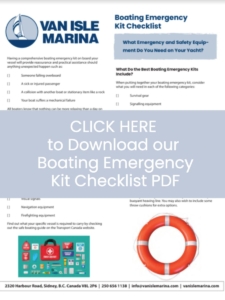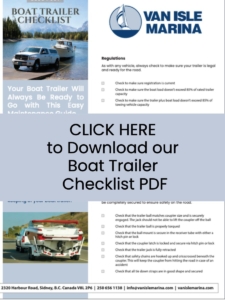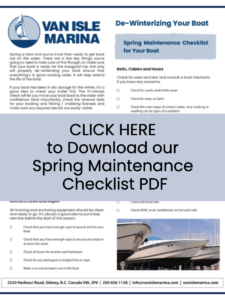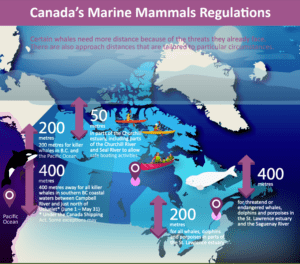B.C.’s Top 10 Freshwater Fishing Spots
The Best Fishing Lakes and Rivers in British Columbia
With over 20,000 lakes and 750,000km of waterways, British Columbia is a freshwater fishing paradise and a dream for anglers. Freshwater fishing offers a completely different experience to ocean fishing, and the opportunity to catch a variety of species of fish, some of which are unique to the area.
>> Looking for a new fishing boat? Check our our selection of new and pre-owned at Van Isle Marina: Boats for sale.
Anglers Spoiled for Choice in B.C.’s Species Rich Fresh Waters
There is an abundance of fish species to be found in British Columbia’s lakes and rivers including:
- Rainbow Trout
- Bull Trout
- Cutthroat Trout
- Kokanee
- Steelhead Salmon
- Sockeye Salmon
- Dolly Warden
- Smallmouth and Largemouth Bass
- Arctic Grayling
- Sturgeon
A great catch is almost guaranteed thanks to an annual program funded by the freshwater license fee that stocks trout in over 800 lakes across the province.
Top 10 Spots for Freshwater Fishing in B.C.
There are so many amazing lakes, streams and rivers in British Columbia but our list includes those which a fishing fanatic should not miss. They are all accessible by boat, although most of these can be fished from shore too.
Elk and Beaver Lakes: Located in the Saanich area of Vancouver Island these lakes are stocked with Rainbow Trout and small and largemouth Bass. The lakes are connected via a shallow channel and are very popular for day use by families. Motorboat speed and power limitations are in effect in some areas.
Quesnel Lake: With a depth of 2,000ft, this Cariboo area lake is believed to be the deepest fjord lake in the world. Access this pristine wilderness fishing spot via boat launches and recreation sites on the western shore. This lake breeds large fish with Lake Trout up to 20kg as well as Rainbow and Bull Trout and Kokanee to be found.
Sheridan Lake: Despite its secluded location near 100 Mile House; this lake is considered to be one of the best trout fishing lakes in the province. Rainbow Trout can grow up to 16kg thanks to a diet rich in freshwater shrimp which is abundant in the lake. There are a number of boat launches and resorts for anglers to choose from.
Shushwap Lake: Known for its beautiful beaches; this lake, which has four ‘arms’ is rumoured to contain up to 19 species of fish. Chinook, Coho and Sockeye Salmon are certain to be found in the aptly named Salmon Arm, but angler’s in the know go for the Bull and Rainbow Trout which can weigh in at 10kg.
Williston Lake: At over 1,700sq km, this lake is actually the largest reservoir in BC, formed when the W.A.C Bennett Dam was constructed in 1968. A popular lake with many beaches and provincial parks on its shore; Williston is considered to be one of the best fishing lakes in the province with Arctic G
rayling, Rainbow and Bull Trout, Kokanee and Whitefish all reaching good sizes here.
Anderson Lake: Rainbow Trout, Bull Trout and Sockeye can all be found in this spectacular lake located north of Pemberton. At 21 miles long and nearly 1,000ft in depth the lake can get quite rough in windy weather so smaller boats should stay closer to shore.
Chilko Lake: This glacier-fed lake is the largest high elevation freshwater lake in Canada. Its turquoise waters and surrounding volcanic mountains make for a picturesque backdrop to a day of fishing for Rainbow and Bull Trout. A classified waters licence is required to fish here.
Skeena River: Excellent salmon fishing can be found year-round on this river which runs between Terrace and Prince Rupert. Accessible boat put-ins can be found along highway 16. Bring your fly fishing gear for a successful trip.
Fraser River: B.C.’s largest river system, found east of Vancouver, is best known for its Sturgeon fishing opportunities. You’ll need some strong gear and arms if you catch one of these ancient fish which can grow to 12ft long.
Cowichan River: Located in the centre of Vancouver Island; anglers find most success in the shoulder seasons when the river is cooler. It is considered the finest trout stream in the province thanks to its abundance of insects which keep the unique Brown Trout species plentiful in its waters.
Successful Freshwater Fishing – What to Know Before You Go
- Get a freshwater fishing license – All anglers aged 16 and over require a specific freshwater license to fish the lakes and rivers of B.C. This can be purchased online or at a licensed vendor. Be aware that some locations or species require an additional conservation fee.
- Familiarize yourself with freshwater fishing regulations – these include areas with catch and release only fishing, catch limits and region-specific rules.
- Bring the right gear – Freshwater fishing needs different equipment to ocean fishing. Your local fishing store can help you with supplies such as:
-
- Fly fishing rods and lures
- Species-specific bait
- Strong hooks and lines for large lake fish
- A depth finder
- Remember to wash your hands! – Freshwater fish are sensitive to odors and may be scared away by smells they don’t recognize.
Van Isle Marina Can Help You Find Your Dream Fishing Boat
Keen to try some freshwater fishing but need to upgrade your boat? Van Isle Marina’s experienced sales team can advise you on all the options and additions available, contact us today to find out more.
Got a fishing boat you need to store? We offer docking and dry storage facilities in addition to our 500 open and covered marina berths at our state-of-the-art marina.
Located in Sidney, B.C., Van Isle Marina is a convenient starting point to access the amazing freshwater fishing that Vancouver Island offers, or take the nearby ferry to the mainland to explore all the freshwater fishing locations on our list.



